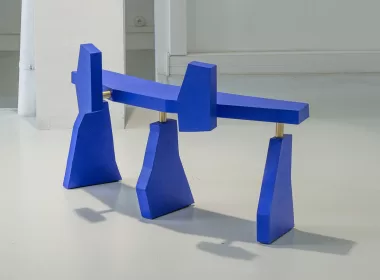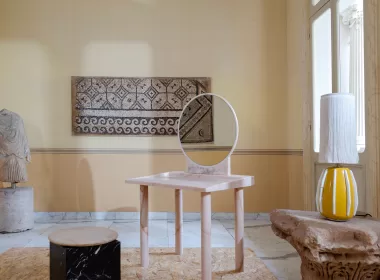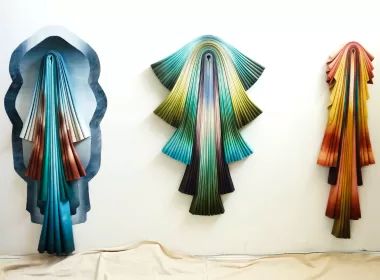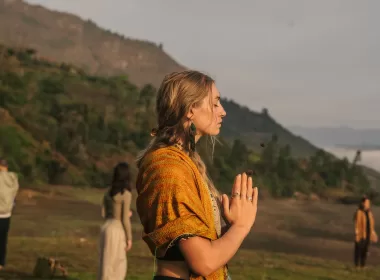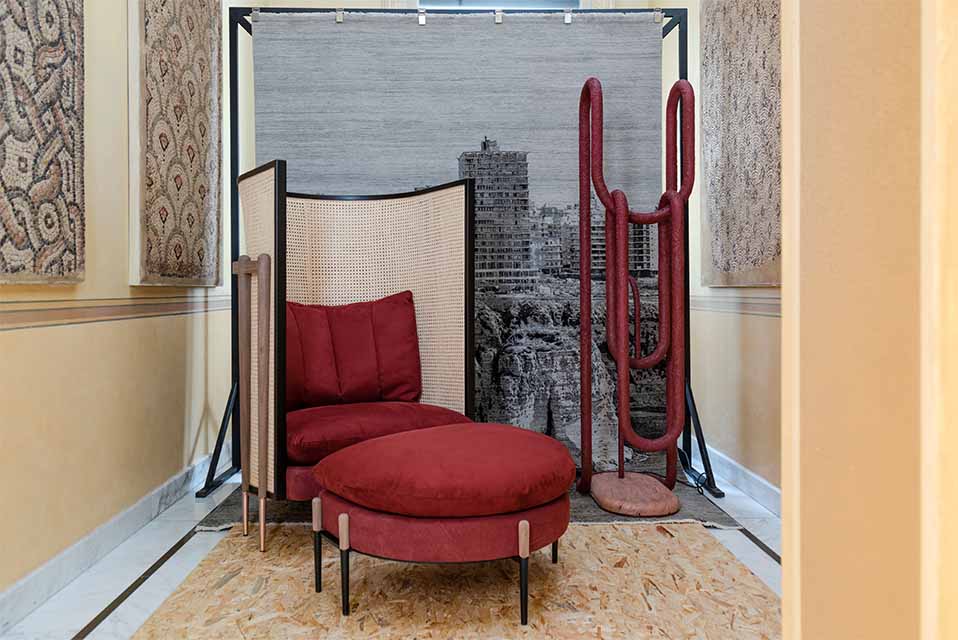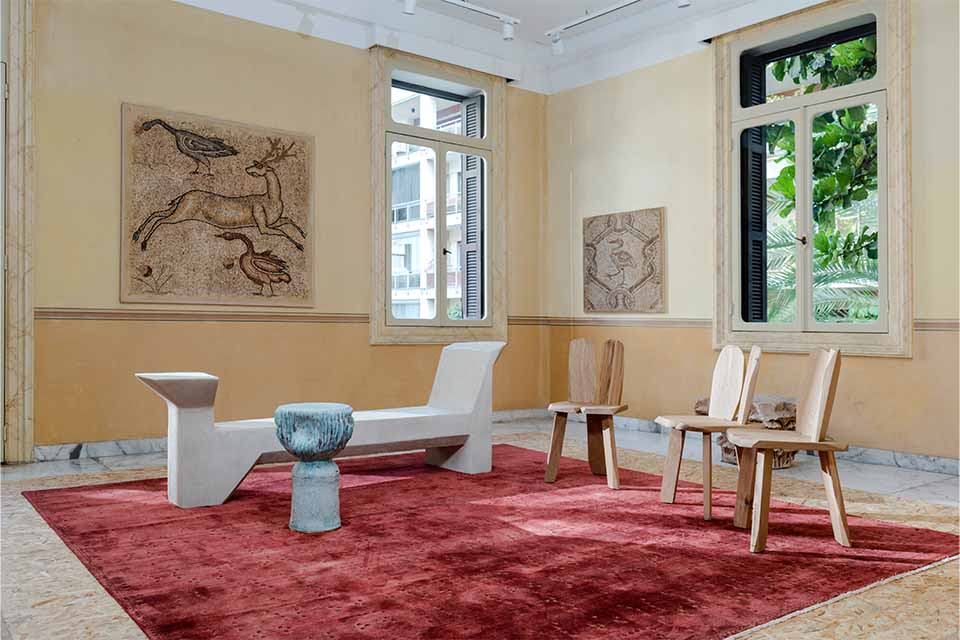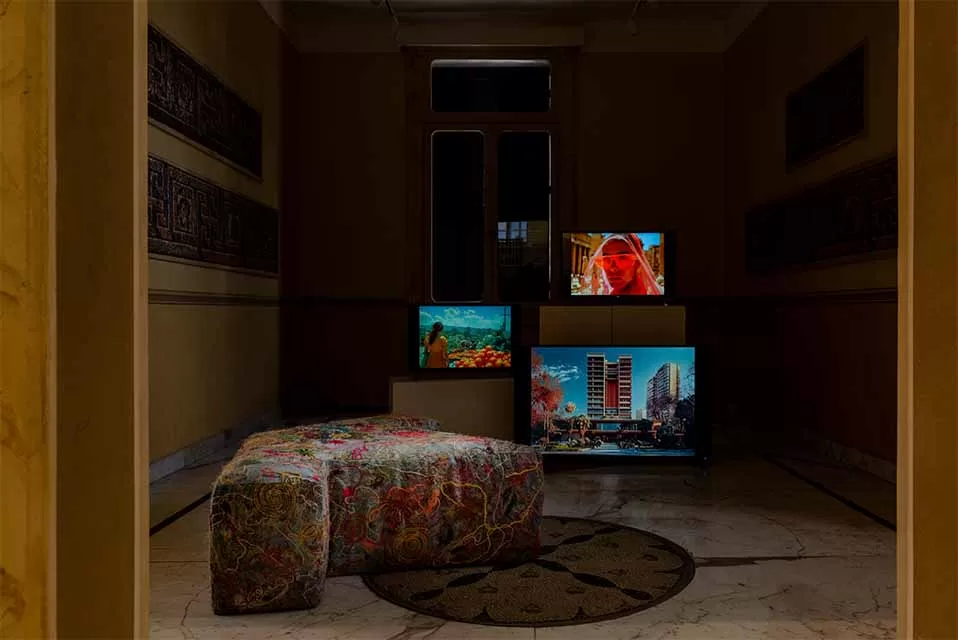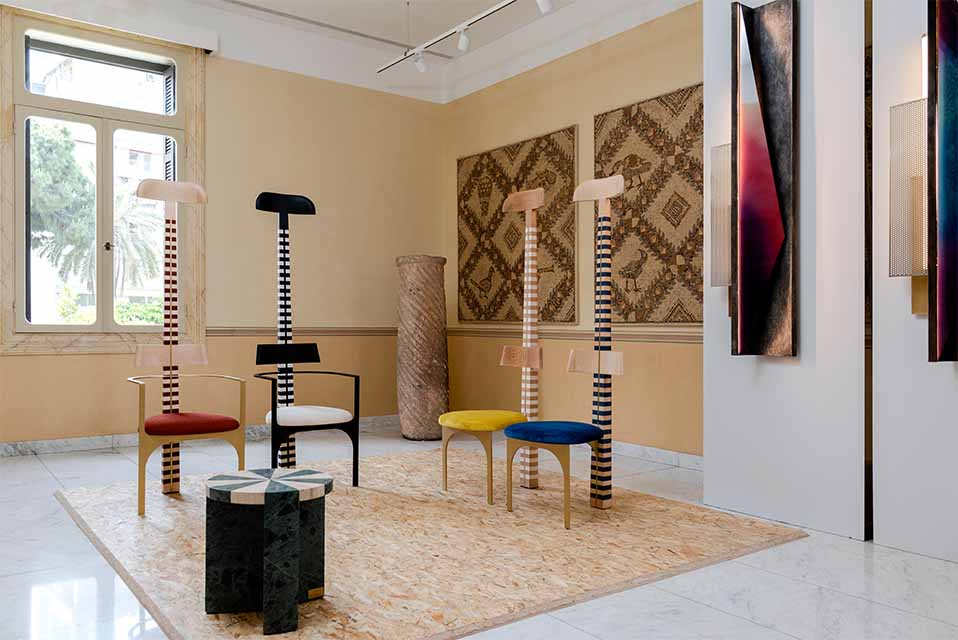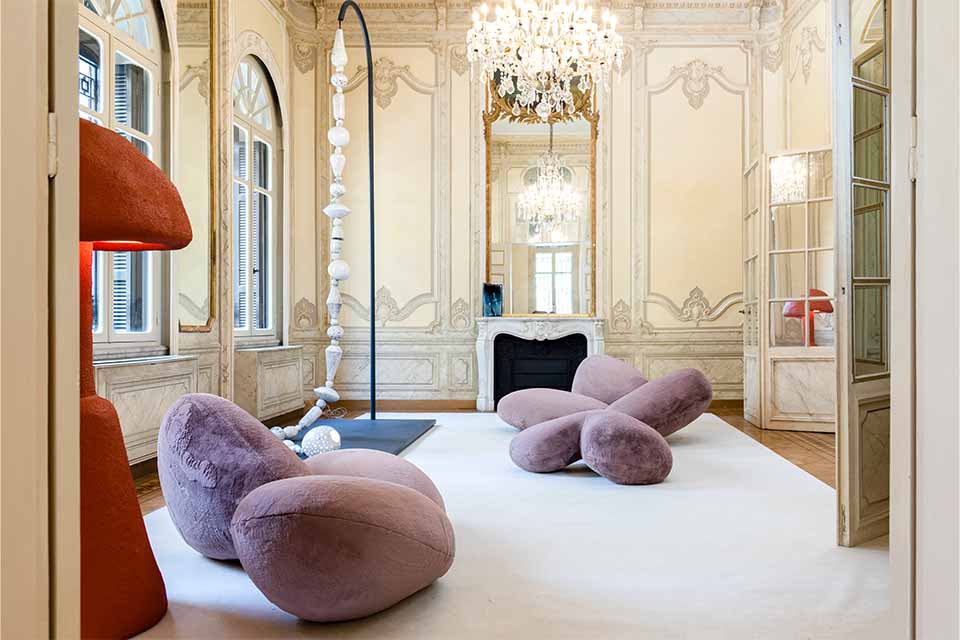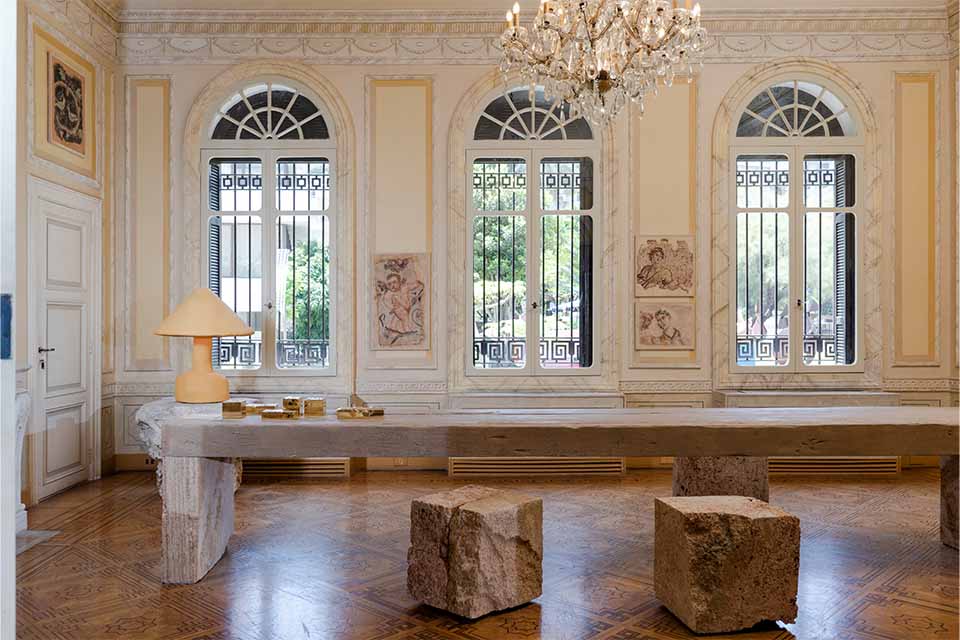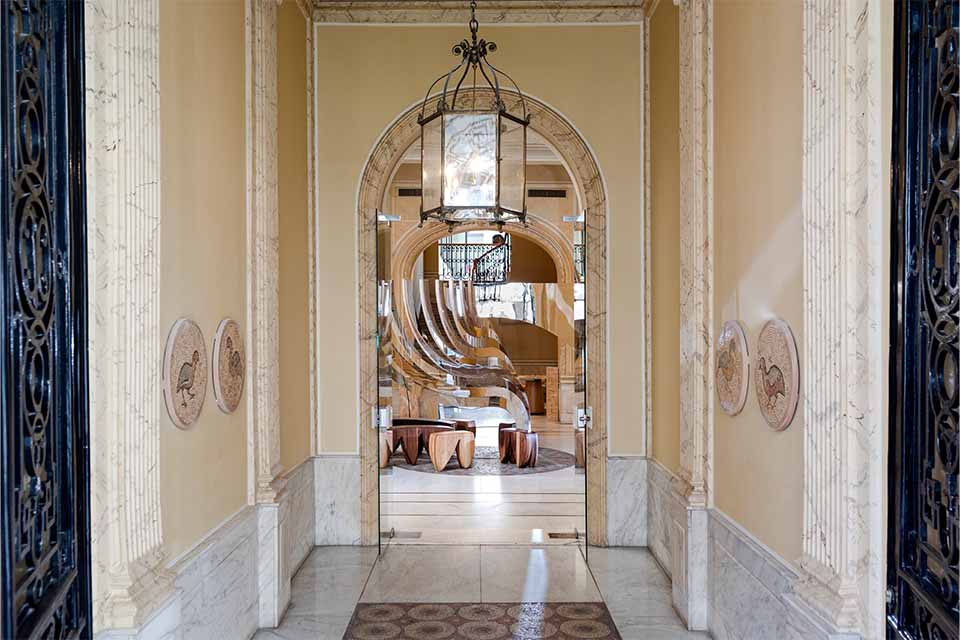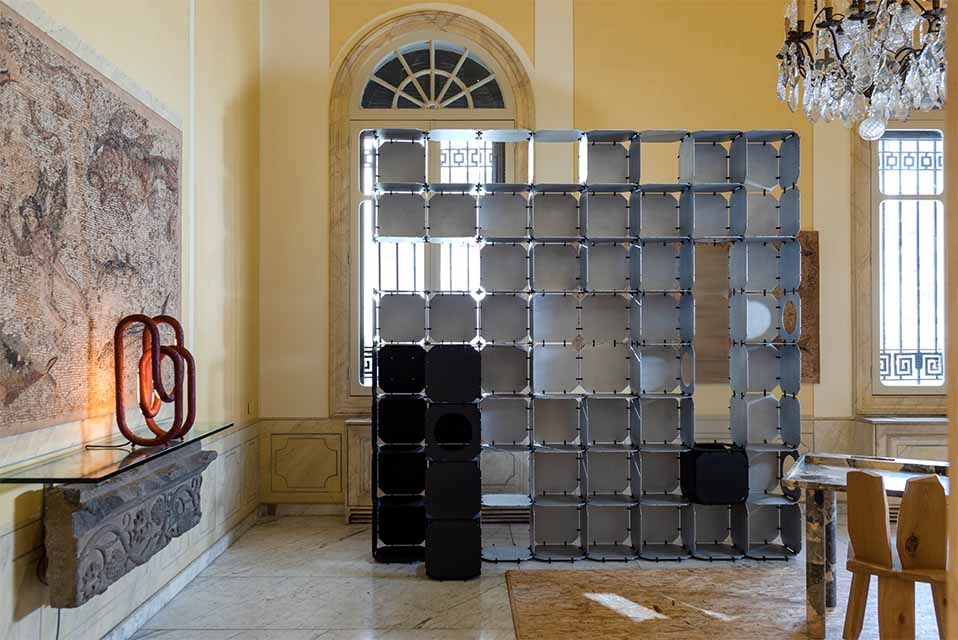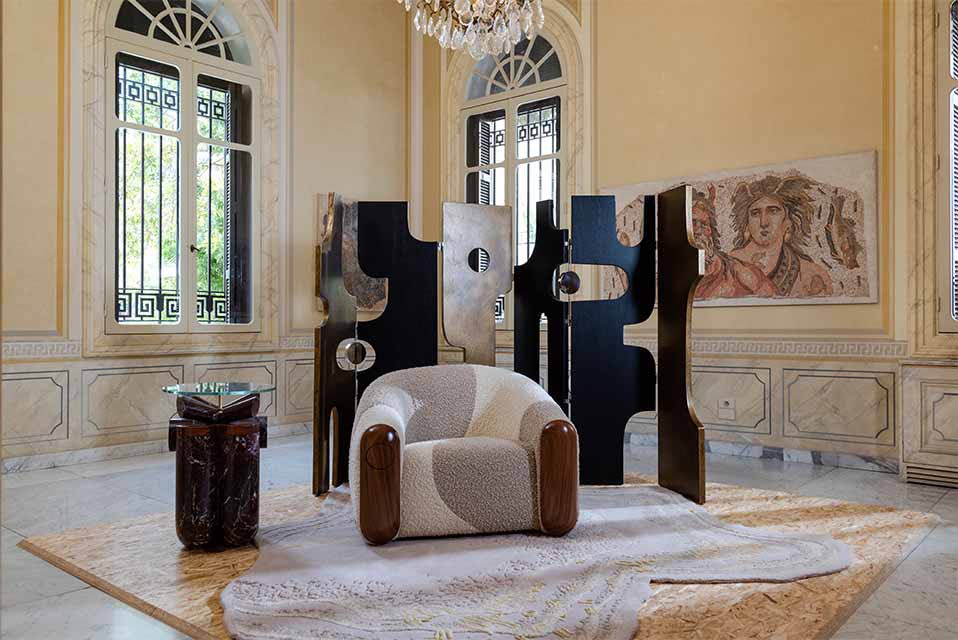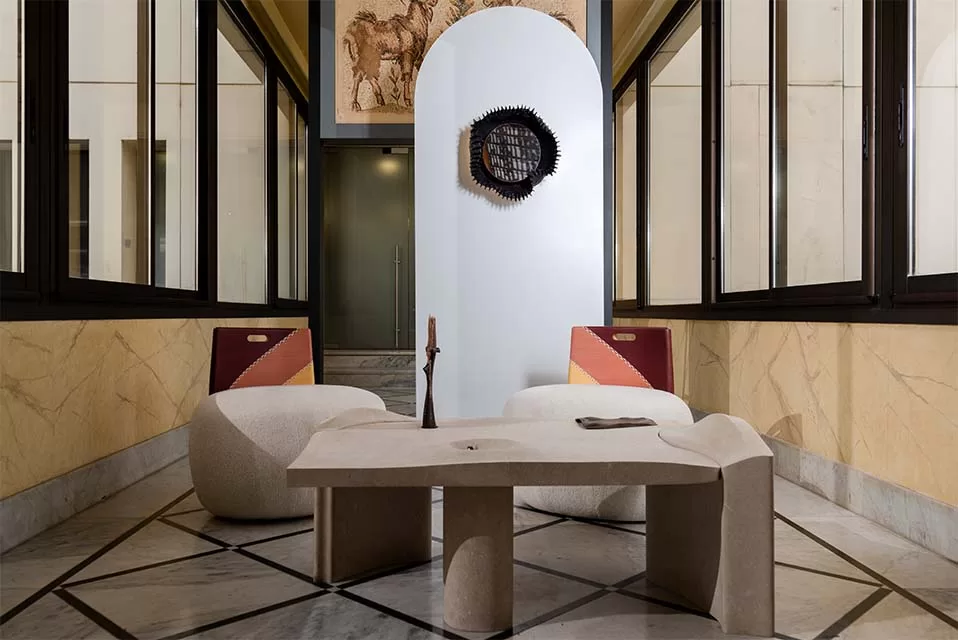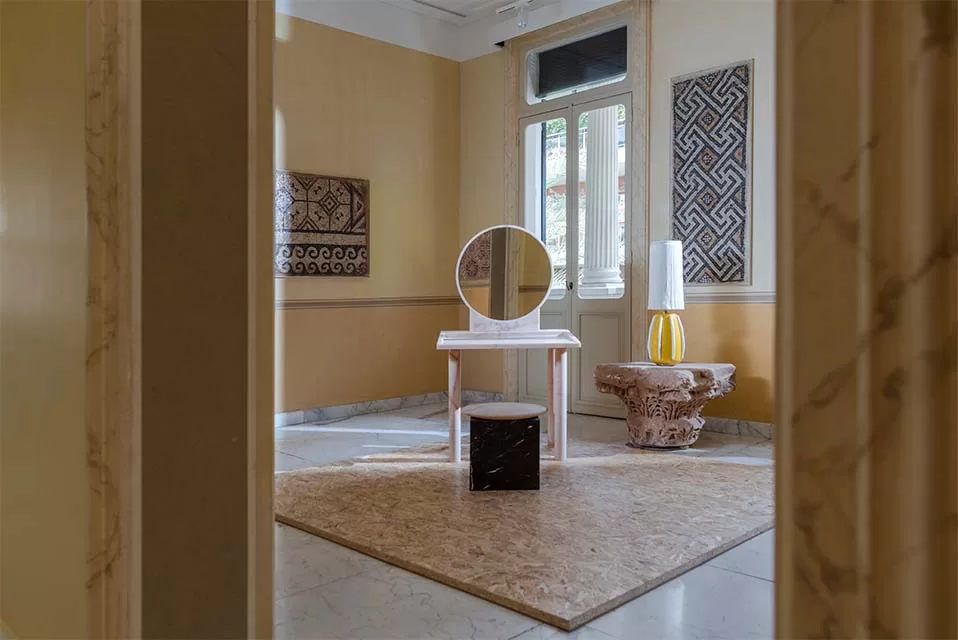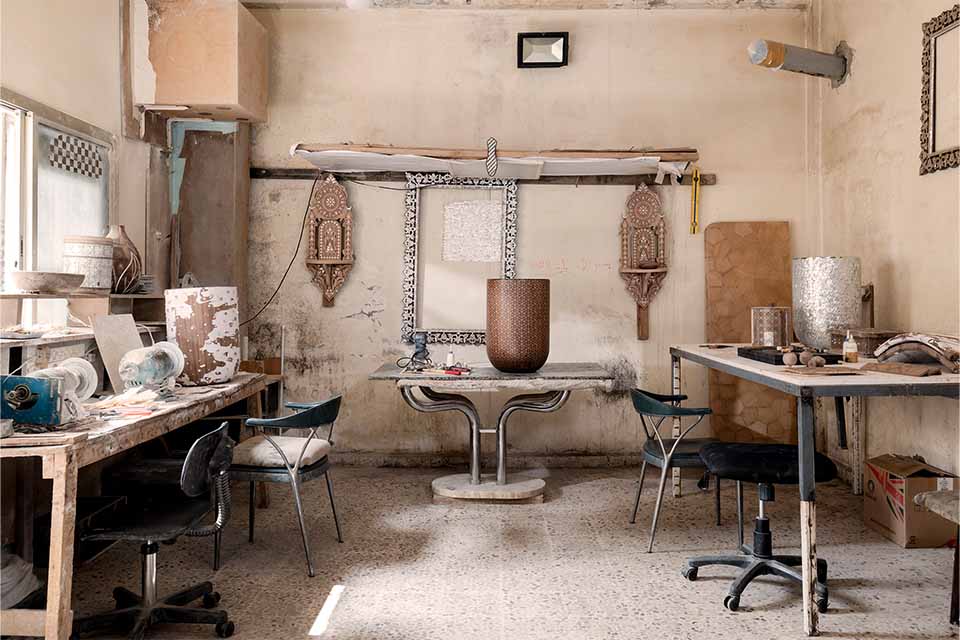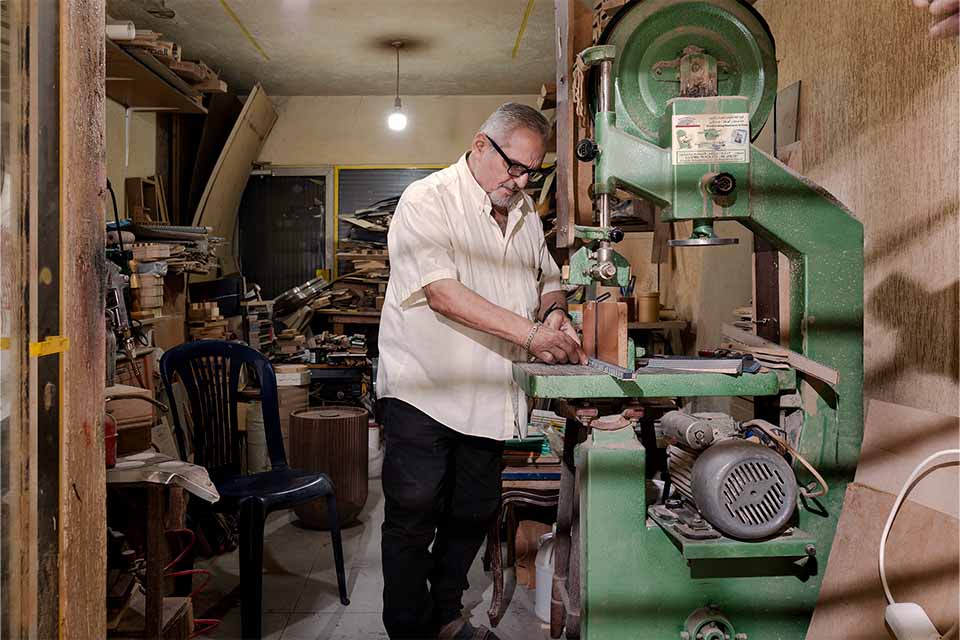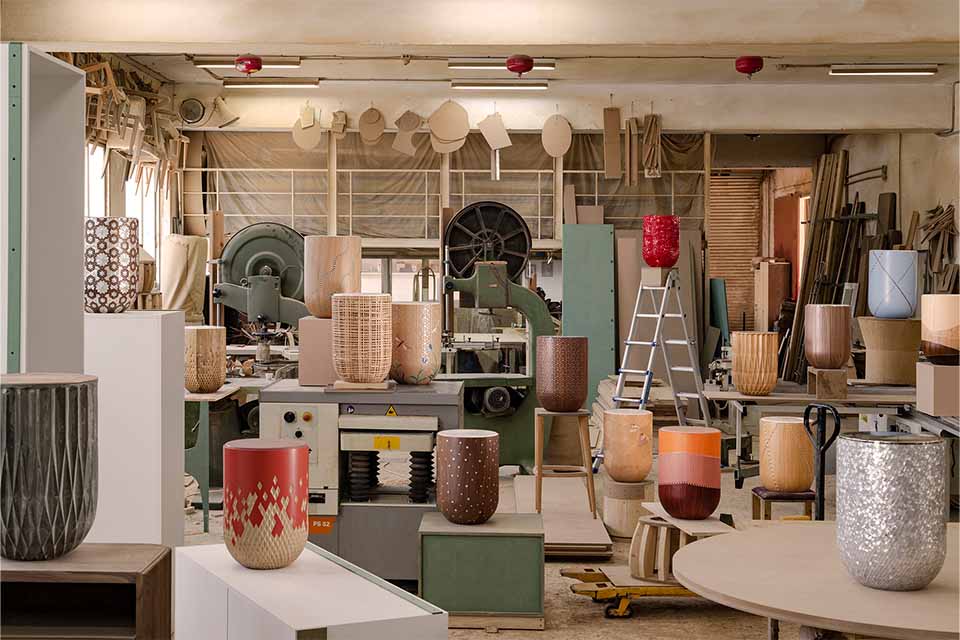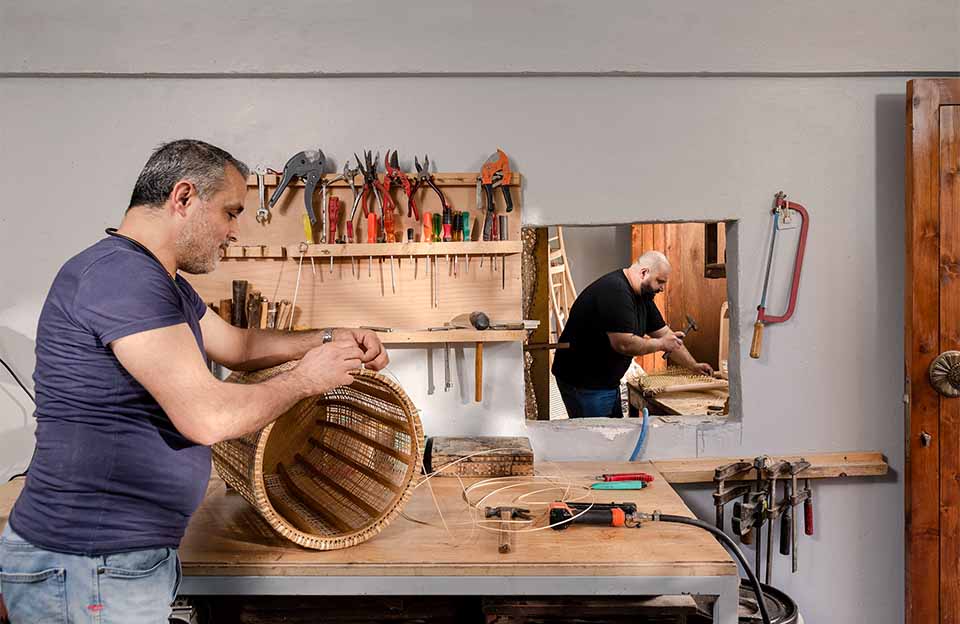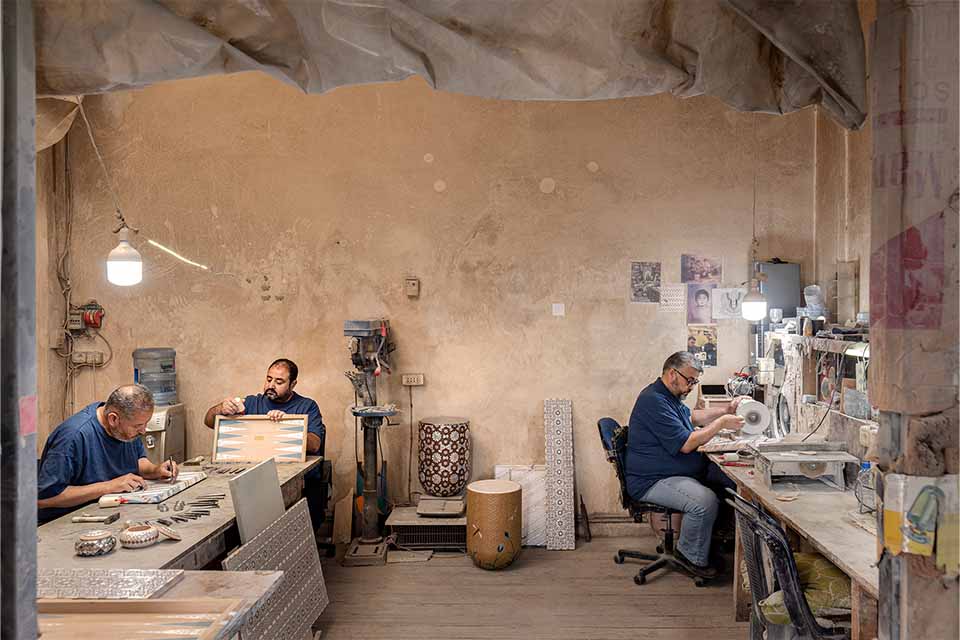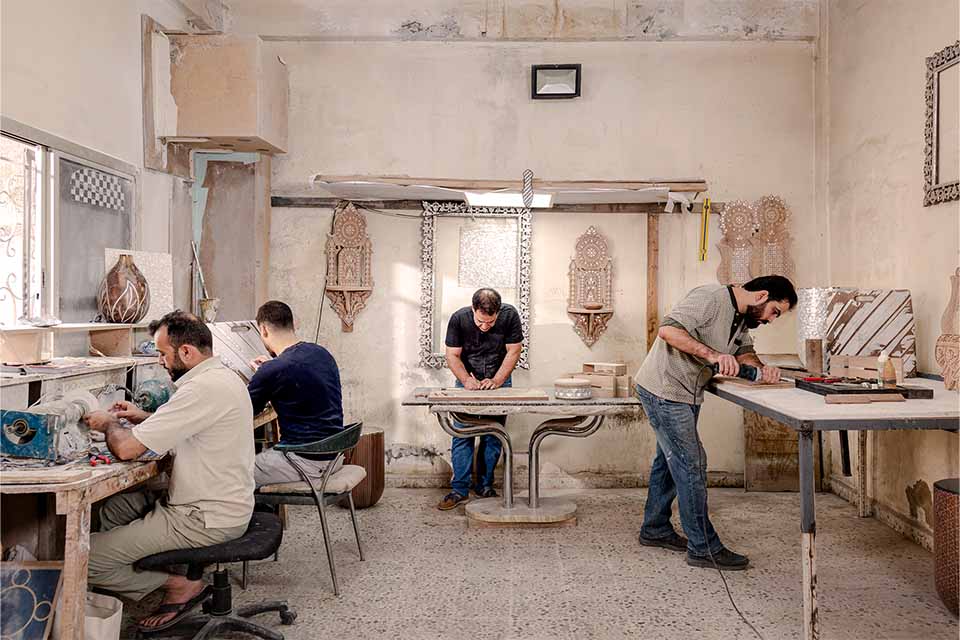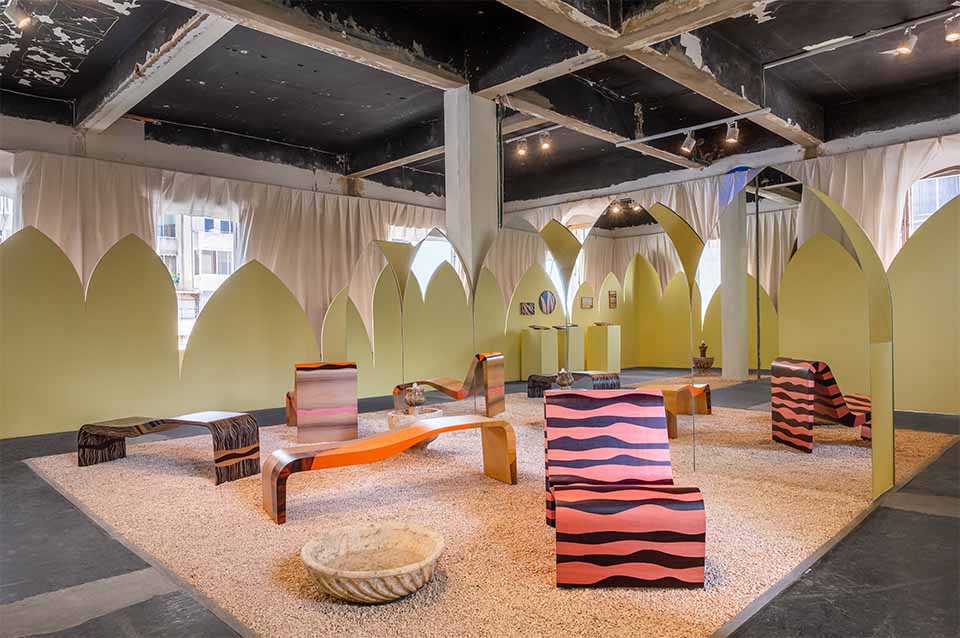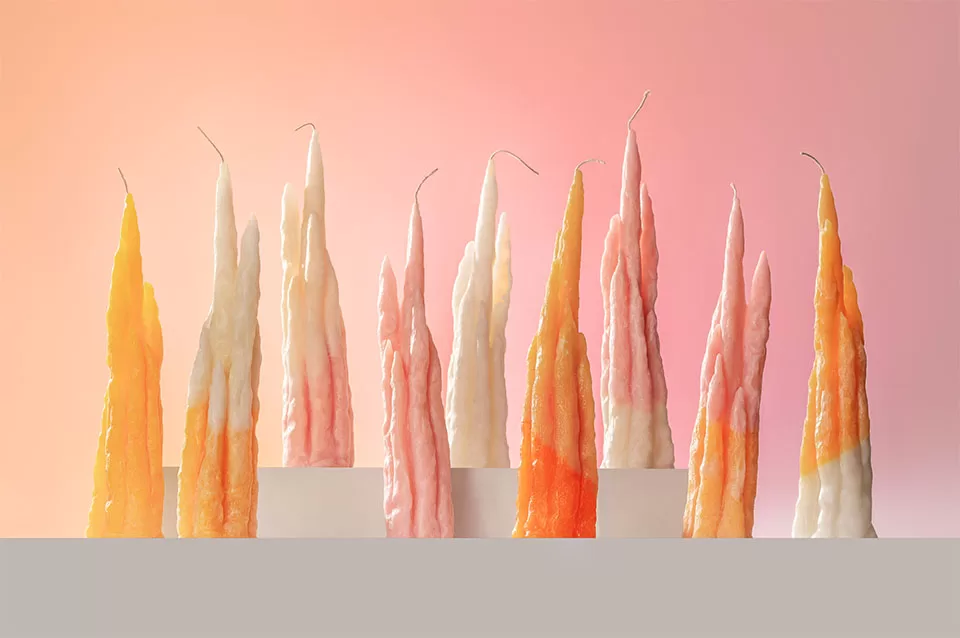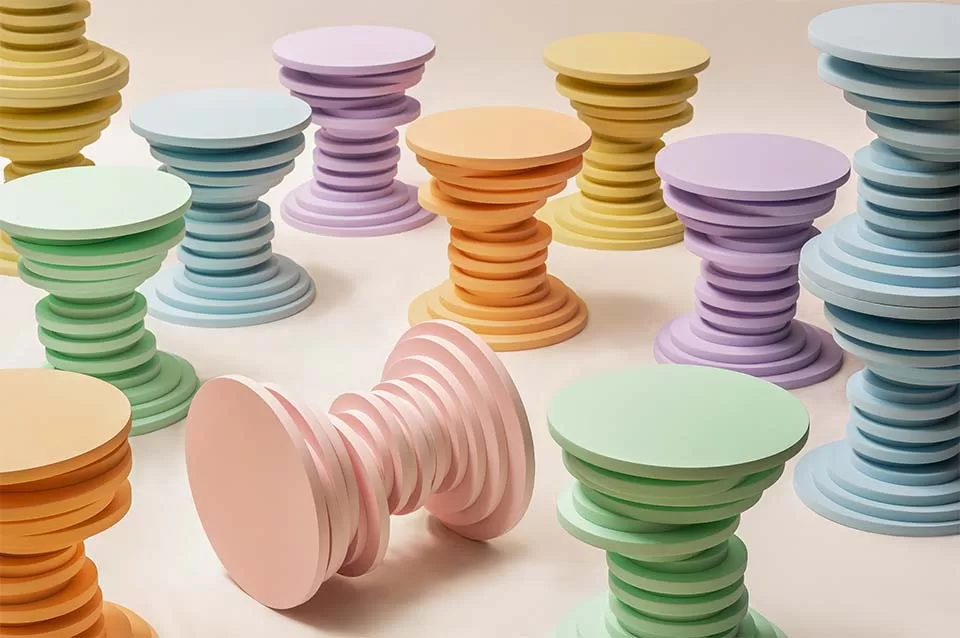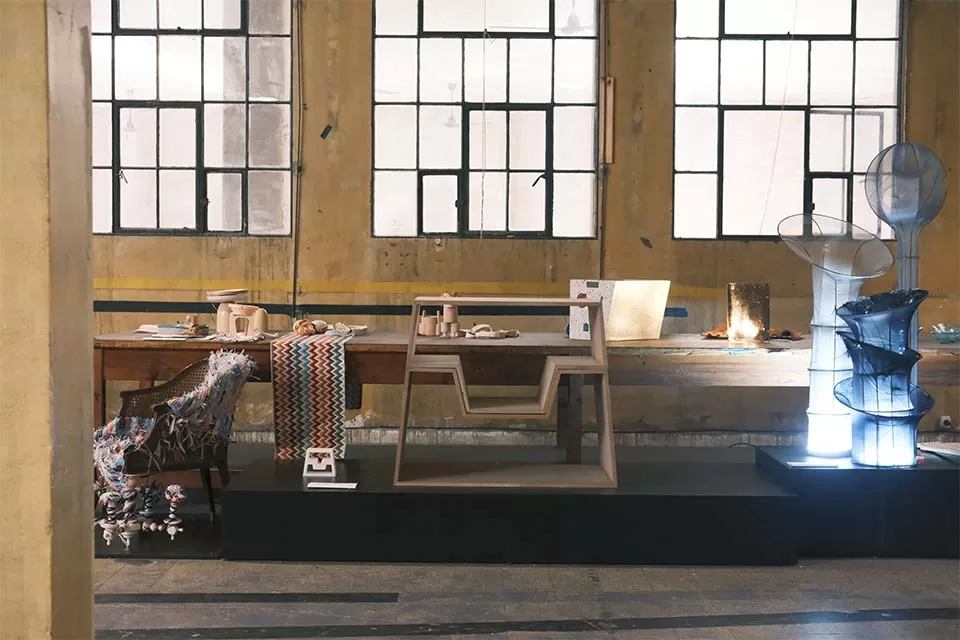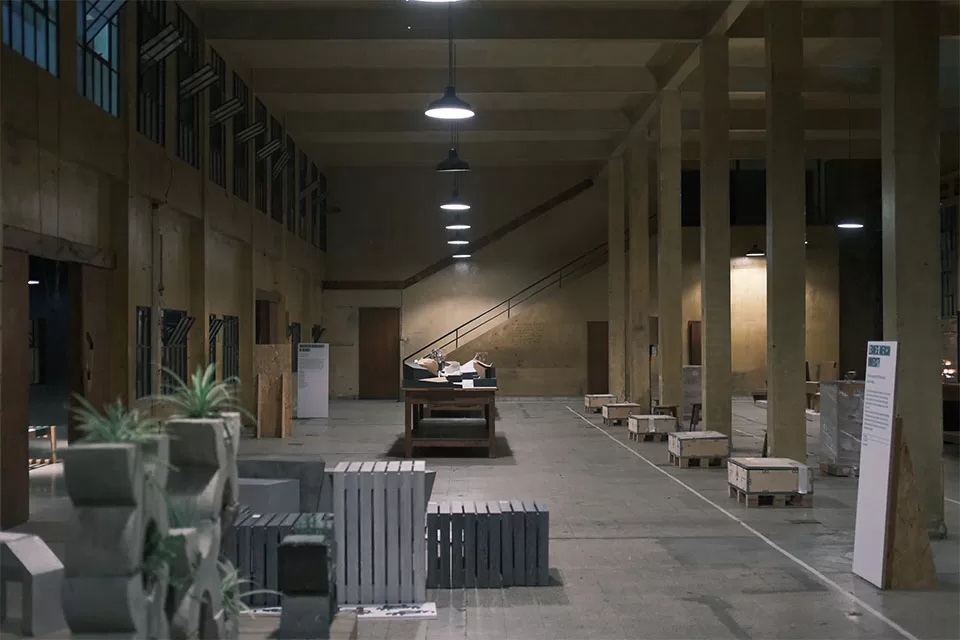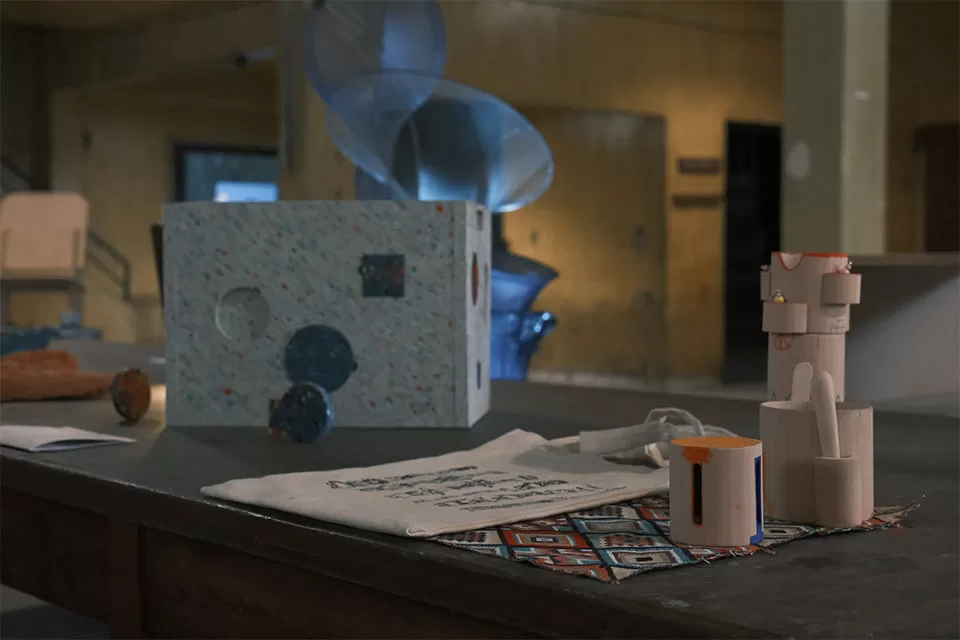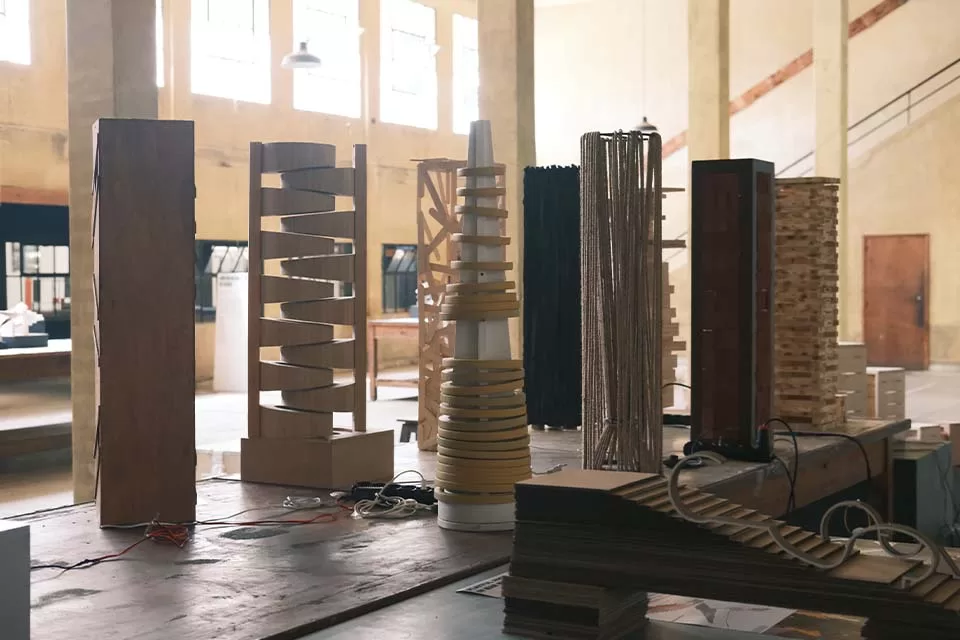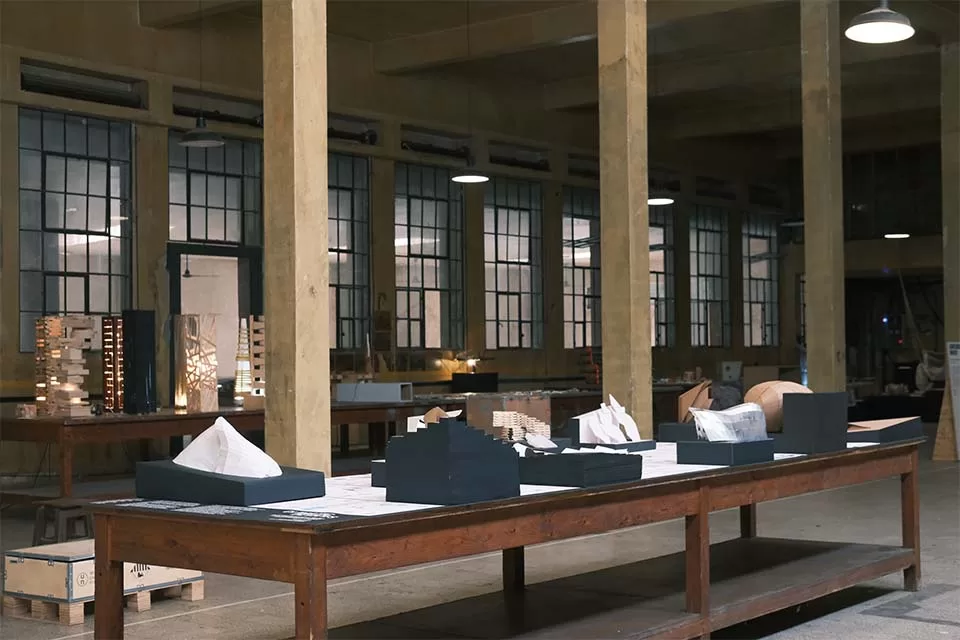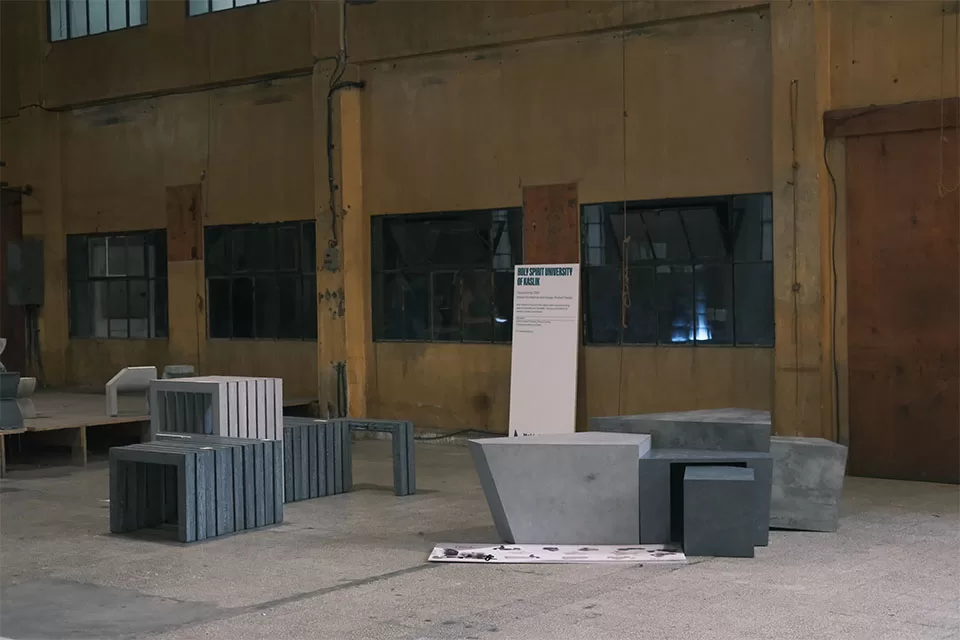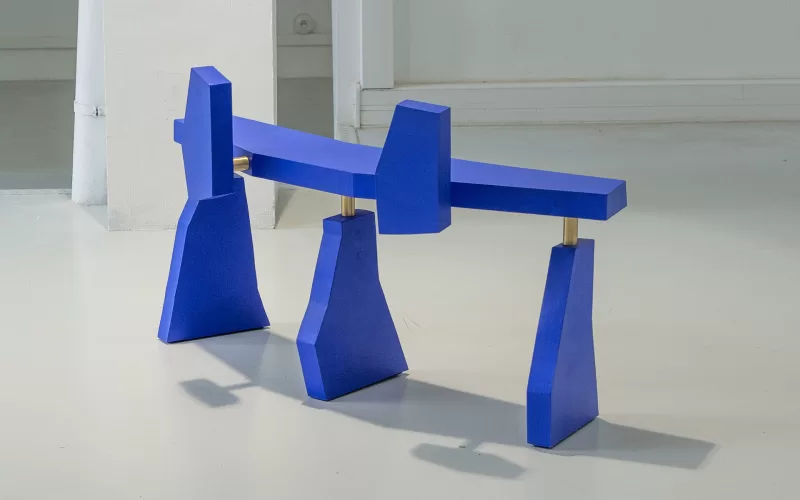We Design Beirut, founded by Mariana Wehbe, a space where tradition and innovation coexist, is a four-day design experience that aims to celebrate and promote design and creativity. In the heart of a city that has been struck by economic instability, political turmoil, and war, We Design Beirut is more than just a showcase of local talent, it is a testament to resilience, passion and the unwavering spirit of a community.
Past Echoes Exhibition
What inspired you to start We Design Beirut, and what was the initial concept behind it?
Mariana Wehbe – The idea for We Design Beirut came from my passion for design, the amazing talent I saw around me, and my belief that Lebanon’s creative talent should be recognised internationally. The design scene had become dormant, and there was a clear gap and need that needed to be filled. The initial spark came from a meeting with the founders of Saccal Design House, where we discussed how Beirut’s design activities had been on pause due to COVID, the August 2020 explosion, and the economic crisis. With many creatives leaving the country and no design events happening, they asked me, “Why don’t you do a design week in Beirut?” Inspired by this, I shared my vision with the team, and after seeing their excitement, I founded We Design Beirut. It felt instinctive because I’ve always believed that Lebanon and its creatives can compete internationally in design, art, culture, and craft. There was a clear need for a design week that understood the local, regional, and international design community, showcasing Lebanon’s capacity through its craftsmen, designers, and students.
When approaching the exhibitions and program, my partner Samer and I insisted on adding depth and focus, which led to the creation of our event’s pillars. Our goal was to introduce the rich talent, culture, creativity, and history of Lebanon by bringing locals and internationals back to our city, and ultimately bringing our city back to life. Our exhibitions celebrate cultural design heritage, artisanal design, and sustainability, ensuring visitors are exposed to outstanding design and innovative ideas. From the start, I envisioned a program that fosters global dialogue on design and sustainability, building a network and ecosystem that benefits everyone involved.
Past Echoes Exhibition
Why is We Design Beirut significant for Lebanon?
Mariana Wehbe – We Design Beirut is significant for Lebanon because it provides a platform to showcase the country’s rich potential and creativity to an international audience. Many of our local designers often have to go abroad to display their talent, so we created We Design Beirut to give them the opportunity to showcase their work here. The event also aims to revive Lebanon’s creative scene, which has been dormant and needed to be brought back to life. By bringing together design leaders and local innovators, the event fosters collaboration and the exchange of ideas, leading to new opportunities and growth for the Lebanese design community. Additionally, it highlights Lebanon’s unique history and artistic heritage, positioning the country as a vibrant hub for design and innovation. We Design Beirut is not just a national event but an international platform that aims to put Lebanon back on the regional and international stage. By attracting design experts and enthusiasts from around the world, the event facilitates a global exchange of ideas and practices.
Design has always been significant in Lebanon, a country on the Mediterranean that has witnessed thousands of years of different cultures, civilizations, architecture, and heritage, from the Romans and Ottomans to the French and British. We grew up with this mix of cultures, and we see it not just in design but throughout our country—in our artisans, in our fashion, jewelry, in our streets, and in our buildings. This is just how we Lebanese are and have always been.
Just like all the other countries and different design scenes Lebanon is a player, like a kid in school, that wants to join the game in the region and be part of that dynamic. We are so proud of how beautifully well our region is playing in the world of design, from the UAE and KSA to Qatar and Egypt, and we as Lebanese want to be a kid on that playground that also gets to be part of the game. However, seeing our country being unable to do that before due to the back to back obstacles that have been brought on to us was painful and made it more challenging in bringing this to life. Despite these struggles, we know that once we reach that playground, we can compete, collaborate, engage, and be a part of it.
Context Shots
What forms of design/art were most predominantly featured at the event this year?
Mariana Wehbe – This year, We Design Beirut showcased diverse forms of design, including interior design, architecture, furniture, product design, ceramics, home accessories, and rugs. The event featured designer showcases, installations, and talks, offering a comprehensive view of these fields. We Design Beirut is an opportunity for everyone in our country. We aimed to integrate our artisans and craftsmen and women, highlighting them as the artists they truly are. Our goal was to revive and emphasize their work, which we fear might diminish over the years and generations. Additionally, we involved students and universities as part of our
Sustainability program, promoting the next generation of designers. We are also proud to mention that two participants from our sustainable Materials Exhibition, Rabih Koussa & Nabil Farhat and Hadi Abou Hamdan, were recently nominated for the Emerging Talent Award by the Institut du Monde Arabe. This was their first exhibition ever, and we are so happy that We Design Beirut could provide them with this opportunity. From the start, our aim has been to showcase the incredible talents we have and to help them receive the recognition they so deserve.
What was the focus or theme of this year’s event?
Mariana Wehbe – We Design Beirut is curated around our 3 main pillars: Empowerment, Preservation, and Sustainability: We Empower our Artisans and their Craft, We Preserve our Heritage and Culture, and We Sustain our Environment and Future. Through our program, we aimed to spotlight artisanal craftsmen and women, established and emerging designers, and of course aspiring students to showcase the past, present, and future of design respectively.
Collective Y Exhibition
In what ways have Lebanon’s economic and political events influenced We Design Beirut?
Mariana Wehbe – Lebanon’s economic and political events have had a significant impact on We Design Beirut. The country’s challenging conditions and political instability led to two postponements of the event, along with various logistical and financial difficulties. Despite these hurdles, we remained committed to our vision and successfully overcame the obstacles.
The adversity highlighted the importance of having a platform like We Design Beirut to showcase Lebanon’s design talent and culture during tough times. The event serves as a beacon of resilience and creativity, aiming to strengthen the local design community and foster international connections. By showcasing Lebanon’s talent on a global stage, We Design Beirut contributes to the country’s cultural and creative revival, demonstrating Lebanon’s enduring potential and innovation even amidst challenging circumstances.
How important was this year’s event, especially when looking at the current war?
Mariana Wehbe – We were born into a country marked by civil war. We are children of war, immigration, and generations worth of instability. Sometimes, it feels like we’re at the breaking point, where hope seems lost, even though we’re known for being resilient. The daily struggle to survive, keep our families safe, and decide whether to stay or leave can really take a toll and make us forget the magic of our city and both its and our strength. I think We Design Beirut revived this for all of us, my partner, my team, and myself included. We were able to see for a moment in time, even if it was for four brief days, what it could be like to live in a country that has never known war and destruction. We were able to know what it would feel like to see kids and elderly walking in the streets from exhibition to exhibition. We were able to remind everyone what this country is about and what is was like in some short moments of time across the years. We didn’t know it at the time amid all the hard work, but when we saw it come to life, we realized it was much more than just a design week. We could feel it, and it is that feeling that we thrive on and hope to always keep alive to continue doing what we do for our country.


